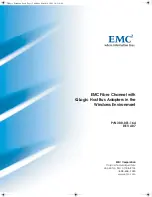
Instruction manual
3
• The adapter can connect to a host laptop’s USB-C port that doesn’t support USB
Power Delivery 2.0. However, in this configuration if a power adapter is connected to
the multifunction adapter, it will not pass power through to your host laptop.
• Video output capabilities are dependent on the video card and hardware
specifications of your connected host laptop.
• Not all USB-C ports support the full functionality of the USB Type-C standard. Ensure
that your host USB-C port supports USB Power Delivery 2.0 and DP alt mode.
System requirements are subject to change. For the latest requirements, please visit
www.startech.com/DKT30CHPD.
About USB 3.0 and USB 3.1 Gen 1
USB 3.0 is also known as USB 3.1 Gen 1. This connectivity standard offers speeds up
to 5Gbps. Any mention of USB 3.0 in this manual or on the StarTech.com website for
DKT30CHPD refers to the 5Gbps USB 3.1 Gen 1 standard.
About USB-C
Not all USB-C ports support the full functionality of the USB Type-C standard. Some
ports might only provide data transfers, and might not support video or USB Power
Delivery 2.0. For this adapter to operate properly, check to ensure that your host laptop
supports DP alt mode and USB Power Delivery 2.0.
If your laptop supports DP alt mode, but not USB Power Delivery, then the
multifunction adapter will be powered by your laptop’s host USB-C port.
Thunderbolt™ 3 technology also uses the USB-C connector, so you can connect the
adapter to a Thunderbolt 3 port. The adapter will connect to the Thunderbolt 3 port at
the USB speed of 5Gbps.
About the adapter’s USB-C port
When connected to a compatible host USB-C port, the adapter itself supports data
throughput (up to 5Gbps), as well as DP alt mode (video over USB-C), and USB Power
Delivery 2.0 (maximum 60 watts).
However, the adapter’s USB-C female port only supports USB Power Delivery 2.0. This
port cannot be used for data or video throughput. You can only connect a USB-C
power adapter to the USB-C female port.
About DP alt mode (DisplayPort




























